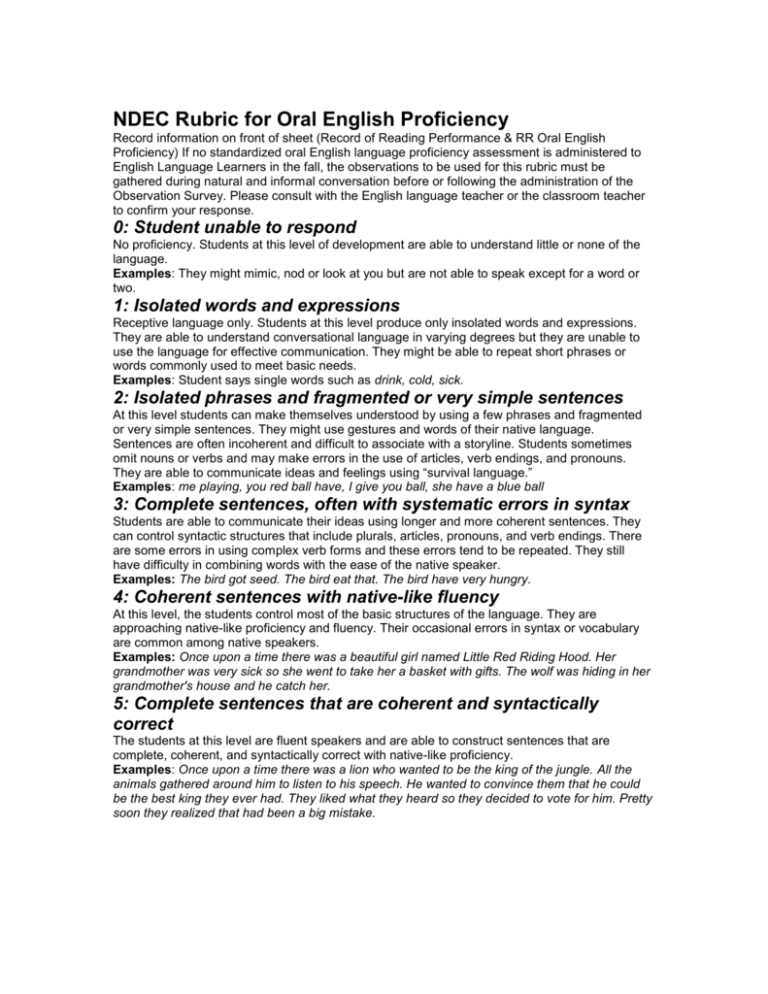NDEC Rubric for Oral English Proficiency
advertisement

NDEC Rubric for Oral English Proficiency Record information on front of sheet (Record of Reading Performance & RR Oral English Proficiency) If no standardized oral English language proficiency assessment is administered to English Language Learners in the fall, the observations to be used for this rubric must be gathered during natural and informal conversation before or following the administration of the Observation Survey. Please consult with the English language teacher or the classroom teacher to confirm your response. 0: Student unable to respond No proficiency. Students at this level of development are able to understand little or none of the language. Examples: They might mimic, nod or look at you but are not able to speak except for a word or two. 1: Isolated words and expressions Receptive language only. Students at this level produce only insolated words and expressions. They are able to understand conversational language in varying degrees but they are unable to use the language for effective communication. They might be able to repeat short phrases or words commonly used to meet basic needs. Examples: Student says single words such as drink, cold, sick. 2: Isolated phrases and fragmented or very simple sentences At this level students can make themselves understood by using a few phrases and fragmented or very simple sentences. They might use gestures and words of their native language. Sentences are often incoherent and difficult to associate with a storyline. Students sometimes omit nouns or verbs and may make errors in the use of articles, verb endings, and pronouns. They are able to communicate ideas and feelings using “survival language.” Examples: me playing, you red ball have, I give you ball, she have a blue ball 3: Complete sentences, often with systematic errors in syntax Students are able to communicate their ideas using longer and more coherent sentences. They can control syntactic structures that include plurals, articles, pronouns, and verb endings. There are some errors in using complex verb forms and these errors tend to be repeated. They still have difficulty in combining words with the ease of the native speaker. Examples: The bird got seed. The bird eat that. The bird have very hungry. 4: Coherent sentences with native-like fluency At this level, the students control most of the basic structures of the language. They are approaching native-like proficiency and fluency. Their occasional errors in syntax or vocabulary are common among native speakers. Examples: Once upon a time there was a beautiful girl named Little Red Riding Hood. Her grandmother was very sick so she went to take her a basket with gifts. The wolf was hiding in her grandmother's house and he catch her. 5: Complete sentences that are coherent and syntactically correct The students at this level are fluent speakers and are able to construct sentences that are complete, coherent, and syntactically correct with native-like proficiency. Examples: Once upon a time there was a lion who wanted to be the king of the jungle. All the animals gathered around him to listen to his speech. He wanted to convince them that he could be the best king they ever had. They liked what they heard so they decided to vote for him. Pretty soon they realized that had been a big mistake.











